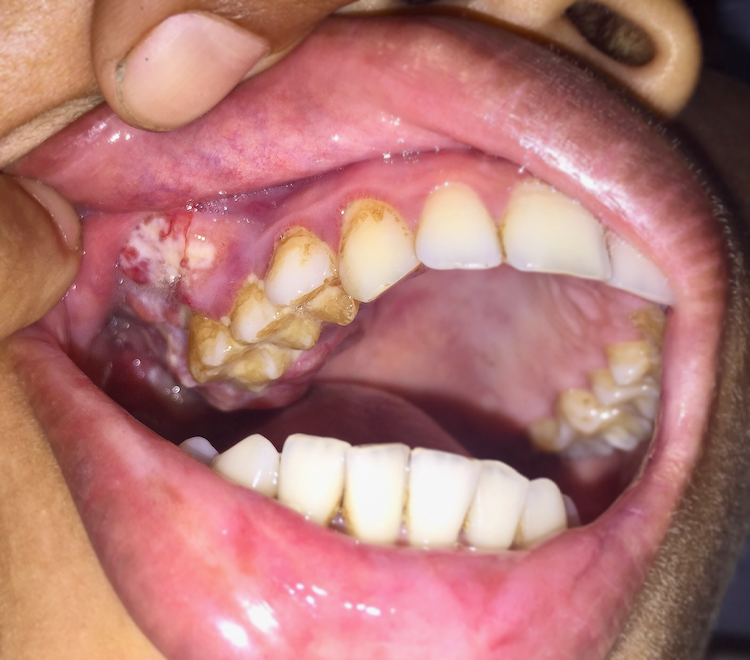Conditions of the Oral Cavity (Mouth)
Conditions of the mouth are numerous. Aside from dental problems, sores or bumps in the mouth may be infection, trauma, salivary gland problems, or benign or malignant tumors. A specialist can diagnose and treat the problem.
salivary duct blockage from a stone or narrowing
Our major salivary glands can become infected or the duct passageway from gland to mouth may become blocked by a stone or narrowing. A swelling of the cheek or under the jaw that gets larger around the time of a meal is a common presentation. Another symptom is a firm knot just under tongue or in the upper part of the cheek lining, back by the molars.
Tumors of the oral cavity, both benign and malignant
A sore, ulcer, or growth on the surface in the mouth should be evaluated, especially if it is growing. At best, doing so may offer reassurance and a simple fix, and at worse, if it is cancer, the earlier it is found, the better the outcomes.
Infection of the oral cavity
The mouth usually tolerates its non-sterile environment, but there are times when bacteria, fungus, and even viruses cause oral infections. Decayed teeth or tooth root problems are the most common culprit of bacterial infections, and evaluation and treatment by a dentist is then indicated. A fungal infection of the oral cavity (thrush) can happen any time, but is more common in the presence of a weak immune system (including with diabetes), a dry mouth, minimal oral intake (as with tube feedings), or in newborns.
Burning tongue and burning mouth syndrome
A sore or burning sensation in the tongue that does not have any other identifiable cause is called burning mouth syndrome. Here is a list of other diagnostic considerations and my usual initial recommendations and workup. The discomfort is usually bilaterally symmetrical, and is present every day for most of the day. It is often minimal early in the morning and during mealtimes and seldom interferes with sleep. The pain usually involves the front of the tongue, but may also affect the lips or palate. If the examination is normal, Often, a mixture of medicines (often called a “magic mouthwash”) is trialed.
Tongue tie (short lingual frenulum) and lip tie (labial frenulum)
The band of tissue in midline under the tongue, called the lingual frenulum, can be short enough to restrict tongue movement. Very early in life this may cause difficulty with nursing and therefore affect nutrition and growth. A short lingual frenulum that does not affect eating, drinking, or speech poses no danger. In the upper lip, a similar structure called a labial frenulum is a band of tissue from the lip to the gums between the central upper incisors.
Hairy tongue
A condition in which the tiny bumps (papillae) on the top of the tongue grow long is called “hairy tongue.” Predisposing factors include smoking, xerostomia (dry mouth), soft diet, poor oral hygiene and certain medications, like tetracyclines or oxidizing mouthwashes or antacids. The patch of elongated papillae tend to retain debris and, sometimes the condition is called “brown hairy tongue” or “black hairy tongue.” The condition is not dangerous.
how to get the most from your appointment
Appointment time is valuable. Here are some suggestions to make the most of your appointment. This preparation will help you and your doctor maximize efficiency and accuracy, freeing up time for questions and answers.








